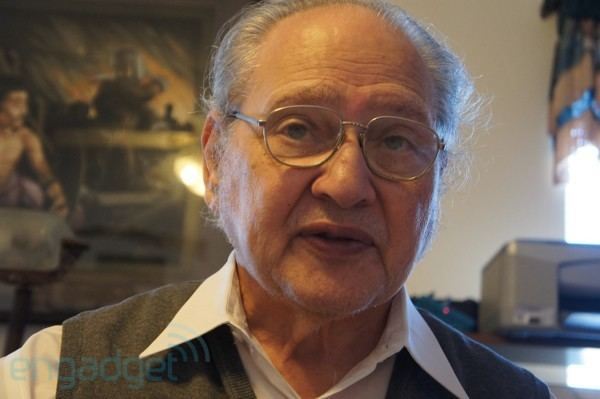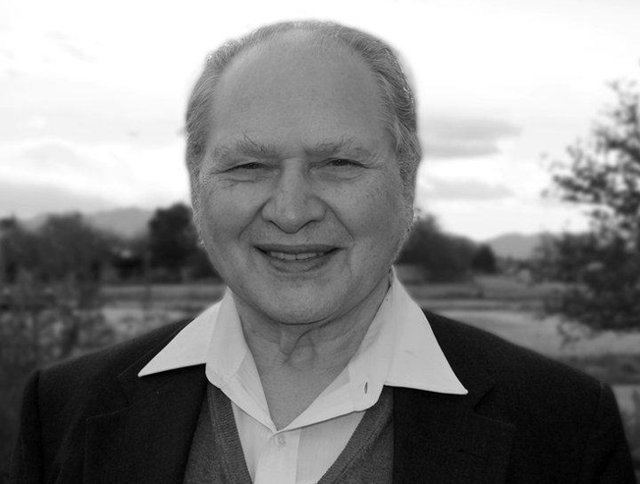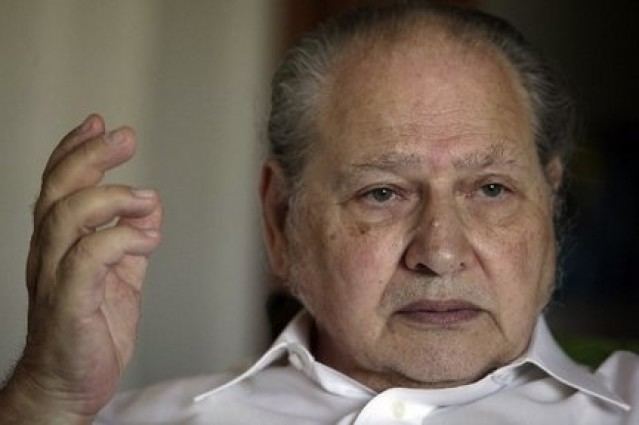Known for Cofounding Apple Inc. Name Ronald Wayne | Organizations founded Apple Inc. | |
 | ||
Full Name Ronald Gerald Wayne Similar People Steve Wozniak, Steve Jobs, Mike Markkula, Tim Cook, John Sculley | ||
Ronald wayne interview apple co founder
Ronald Gerald Wayne (born May 17, 1934) is an American retired electronics industry worker. He co-founded Apple Computer (now Apple Inc.) with Steve Wozniak and Steve Jobs, providing administrative oversight for the new venture. He soon, however, sold his share of the new company for $800 US dollars, and later accepted $1,500 to forfeit any claims against Apple (in total, equivalent to $9,296 in 2016). As of March 2017, if Wayne had kept his 10% stake in Apple Inc., it would have been worth over $75.5 billion.
Contents
- Ronald wayne interview apple co founder
- Ronald wayne
- Early life and education
- Career
- Apple
- Post Apple
- Author
- Documentaries
- Personal life
- References

Ronald wayne
Early life and education

Wayne was born in Cleveland, Ohio, United States on May 17, 1934. He trained as a technical draftsman at the School of Industrial Art in New York.
Career

In 1956, aged 22, he moved to California. In 1971, Wayne started his first business, a company selling slot machine. The company failed, with Wayne reflecting in 2014 that, "I discovered very quickly that I had no business being in business. I was far better working in engineering."
Apple

Wayne worked with Steve Jobs at Atari before he, Jobs, and Wozniak founded Apple Computer on April 1, 1976. Serving as the venture's "adult supervision", Wayne drew the first Apple logo, wrote the three men's original partnership agreement, and wrote the Apple I manual.
Wayne received a 10% stake in Apple. Less than two weeks later, on April 12, 1976 he relinquished his equity for US$800 . Legally, all members of a partnership are personally responsible for any debts incurred by any partner; unlike Jobs and Wozniak, then 21 and 25, Wayne had personal assets that potential creditors could seize. The failure of a slot machine company he had started five years earlier also contributed to his decision to exit the partnership.
Later in 1976, venture capitalist Arthur Rock and Mike Markkula helped develop an Apple business plan and converted the partnership to a corporation. A year after leaving Apple, Wayne received $1,500 for his agreement to forfeit any claims against the new company.
In 1976, its first year of operations, Apple's sales reached US$174,000. In 1977 sales rose to US$2.7 million, in 1978 to US$7.8 million, in 1980 to US$117 million and in 1982 to US$ 1 billion. In February 2015, Apple's value exceeded $700 billion, making it the most valuable U.S. company by far and if Wayne kept his 10% stock until then, it would have been worth tens of billions.
Wayne has stated that he does not regret selling his share of the company as he made the "best decision with the information available to me at the time". He also said he felt the Apple enterprise "would be successful, but at the same time there would be significant bumps along the way and I couldn't risk it. I had already had a rather unfortunate business experience before. I was getting too old and those two were whirlwinds. It was like having a tiger by the tail and I couldn't keep up with these guys."
Post-Apple
After leaving Apple, Wayne resisted Jobs' attempts to get him to return, remaining at Atari until 1978, when he joined Lawrence Livermore National Laboratory and later an electronics company in Salinas, California.
Wayne retired to a mobile home park in Pahrump, Nevada selling stamps and rare coins in Pahrump. Wayne never owned an Apple product until 2011, when he was given an iPad 2 by Aral Balkan at the Update Conference in Brighton, England.
In the late 1970s, Wayne had run a stamp shop in Milpitas, California for a short time, Wayne's Philatelics. After a number of break-ins, he moved his stamp operations to Nevada. The logo for the business was a wood-cut style design, with a man sitting under an apple tree, with the "Wayne's Philatelics" name written in a flowing ribbon curved around the tree. This was the original logo he designed for Apple Computer.
In the early 1990s, Wayne sold the original Apple company agreement, signed in 1976 by Jobs, Wozniak and himself, for $500. In 2011, the contract was sold at auction for $1.6 million. Wayne has stated that it is the one thing he regrets about his involvement with Apple.
He holds a dozen patents.
Author
In July 2011, Wayne published a memoir titled, Adventures of an Apple Founder. Plans for initial exclusivity on the Apple iBookstore did not pan out.
Wayne has also written a socio-economic treatise titled Insolence of Office, released on October 1, 2011 which he describes as:
...the product of decades of research and observation into the evolution of human governance, and the foundations of the American Constitutional Republic. Through this analysis, the reader is introduced to a complete, yet simplified understanding of the architecture of our Constitution, its foundations, principles, and the essential meaning of its structure all in the context of modern living.
Documentaries
Wayne appeared in the documentary Welcome to Macintosh where he describes some of his experiences with Steve Jobs, Steve Wozniak, and Apple Computer.
Personal life
Shortly after February 1974, Wayne came out as gay to Jobs, while both men were employees at Atari. Jobs later recalled, "It was my first encounter with someone who I knew was gay." Wayne said in 2011 that, "Nobody at Atari knew, and I could count on my toes and fingers the number of people I told in my whole life. But I guess it just felt right to tell him, that he would understand, and it didn't have any effect on our relationship."
